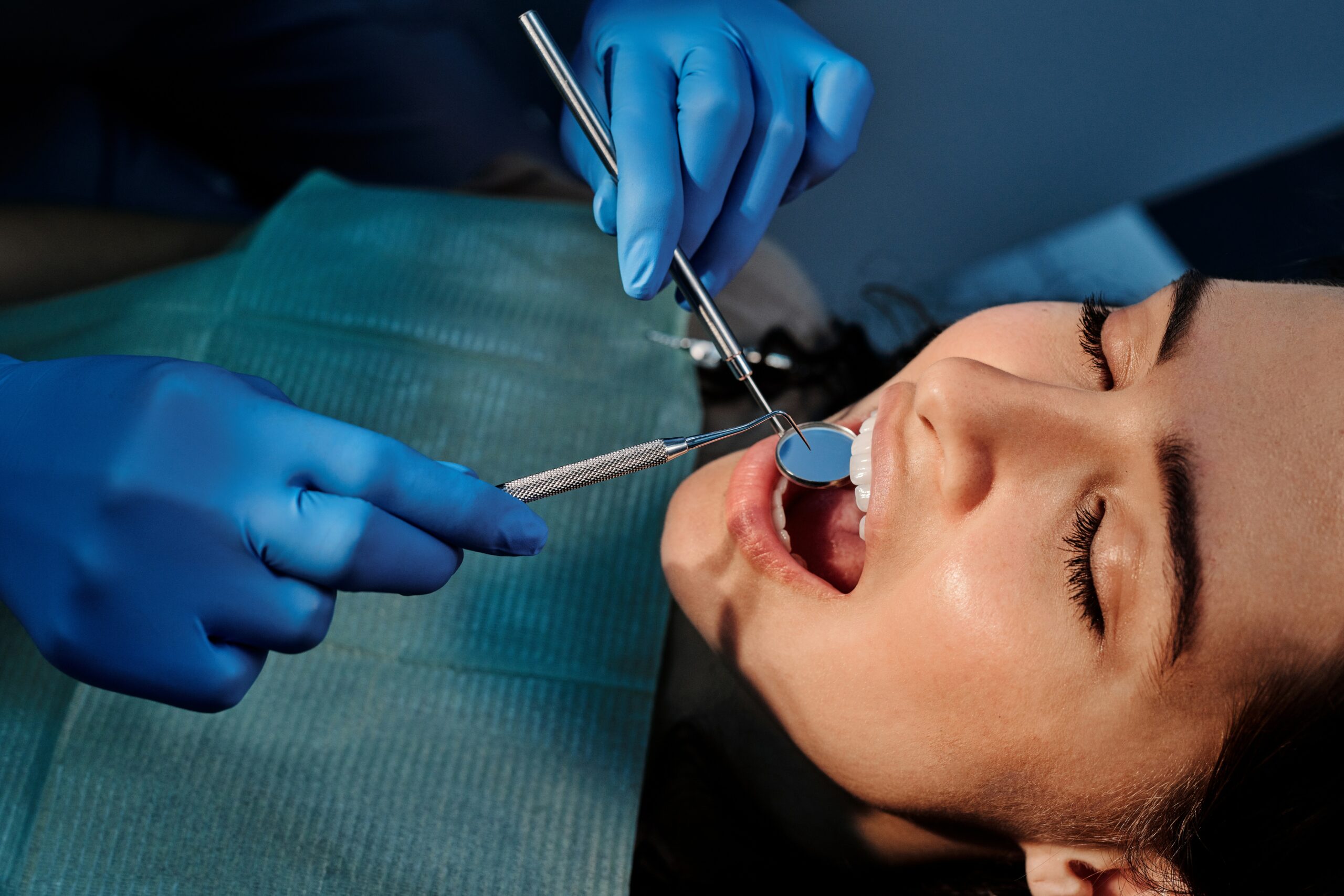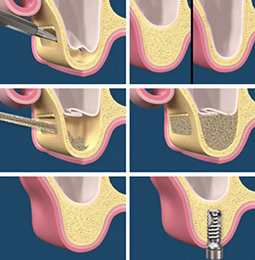Sinus lift is done when there is not enough bone in the upper jaw for dental implants to be placed. During the procedure the surgeon fills up the area with bone-graft material. In some cases it can be performed simultaneously with the implant placement.
Sinus lift is done when there is not enough bone in the upper jaw for dental implants to be placed. During the procedure the surgeon fills up the area with bone-graft material. In some cases it can be performed simultaneously with the implant placement.
A sinus lift surgery can be done with two techniques:
1. Vertical (closed) sinus lift
The sinus cavity is reached through the oral cavity. During the procedure we lift the mucous membrane and push it up a bit, and fill the cavity underneath up with bone graft material. The dental implants are placed in at the same time, and are secured and steady after the healing time is up.
2. Horizontal (open) sinus lift
The oral surgeon opens a tiny window on the bone, pushing it forward, along with the mucous membrane. The cavity is then filled up with bone graft material, but the implant can only be placed 3-4 months afterwards, once the healing period is over.
FAQ
As all surgical procedures, sinus lifts may cause some discomfort once the anaesthetic wears off- bleeding, swelling and some dull pain are the usual symptoms. After the procedure, your dentist will give you written instructions on what you can and cannot do, these need to be followed to the letter. The discomfort can be minimized using these simple guidelines.





